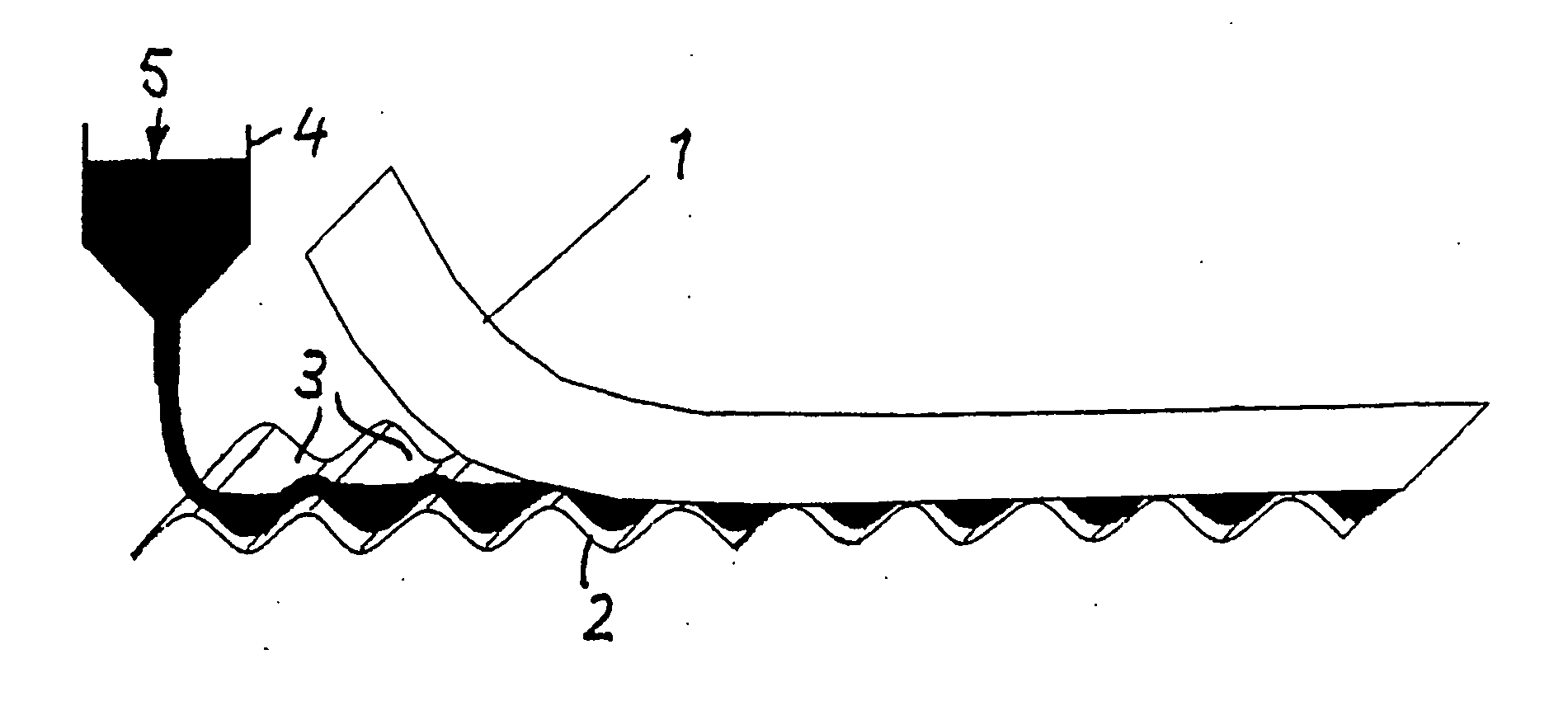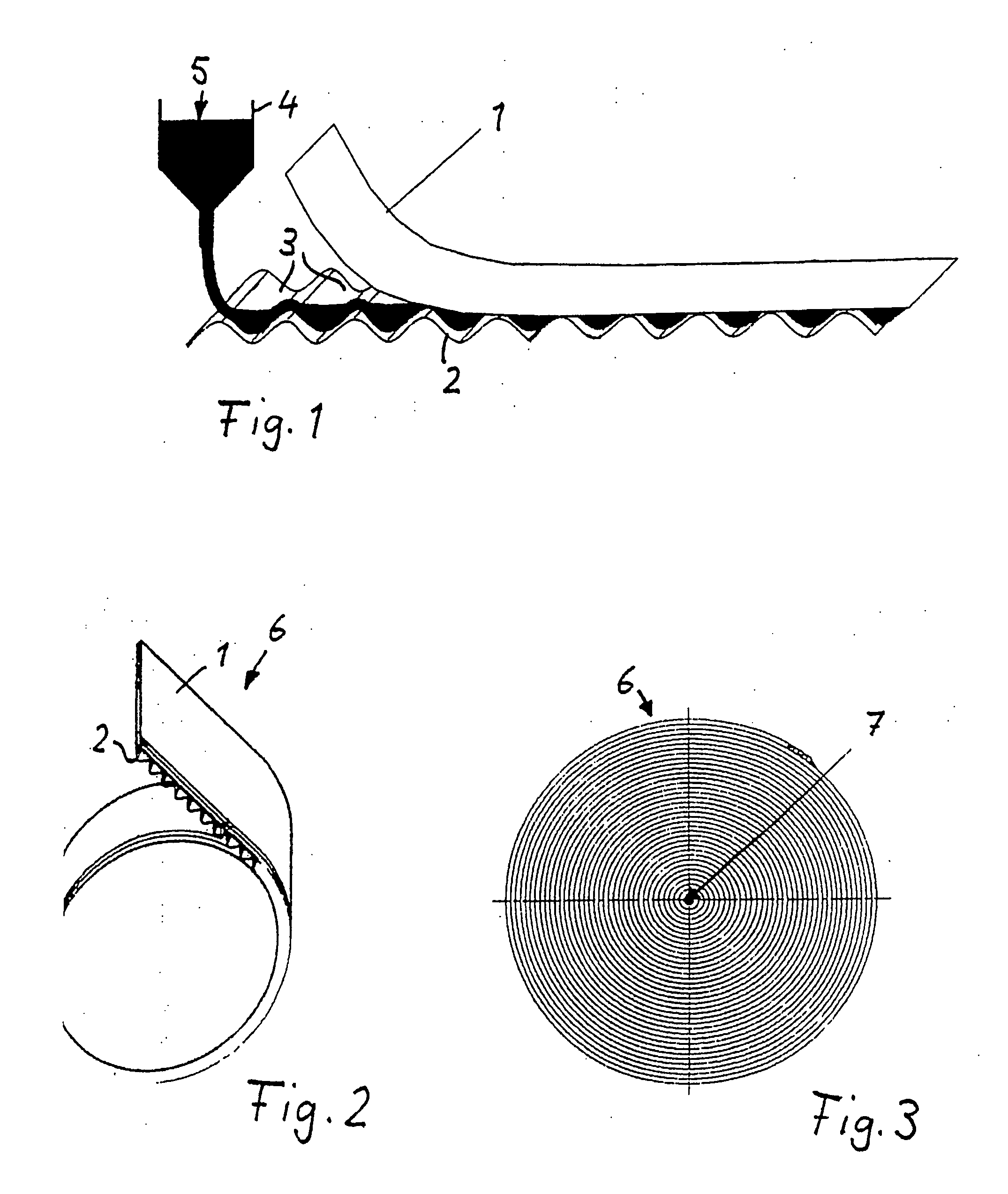Method for producing a ceramic filter element
- Summary
- Abstract
- Description
- Claims
- Application Information
AI Technical Summary
Benefits of technology
Problems solved by technology
Method used
Image
Examples
Embodiment Construction
[0024] As illustrated in FIG. 1, to produce a filter element intended for use in an exhaust gas filter for internal combustion engines, two substrate sheets 1 and 2 are superimposed on each other and bonded together by means of a ceramic adhesive 5. The substrate sheets 1 and 2 are paper sheets and are made of cellulose, but other organic or inorganic combustible substances may also be considered. The lower substrate sheet 2 is corrugated to create parallel extending flow paths 3. The upper substrate sheet is smooth. The two substrate sheets are bonded together by means of an adhesive 5 delivered from a hopper 4 and introduced in the region of one end face of the flow paths 3. In addition to bonding the two substrate sheets together, the adhesive has the function of closing the flow paths 3 at one end.
[0025] The use of a ceramic adhesive has the advantage that it is preserved even after subsequent firing, so that the flow paths remain securely closed. If only the two substrate shee...
PUM
| Property | Measurement | Unit |
|---|---|---|
| Pore size | aaaaa | aaaaa |
| Electrical conductivity | aaaaa | aaaaa |
| Flow rate | aaaaa | aaaaa |
Abstract
Description
Claims
Application Information
 Login to View More
Login to View More - R&D
- Intellectual Property
- Life Sciences
- Materials
- Tech Scout
- Unparalleled Data Quality
- Higher Quality Content
- 60% Fewer Hallucinations
Browse by: Latest US Patents, China's latest patents, Technical Efficacy Thesaurus, Application Domain, Technology Topic, Popular Technical Reports.
© 2025 PatSnap. All rights reserved.Legal|Privacy policy|Modern Slavery Act Transparency Statement|Sitemap|About US| Contact US: help@patsnap.com


